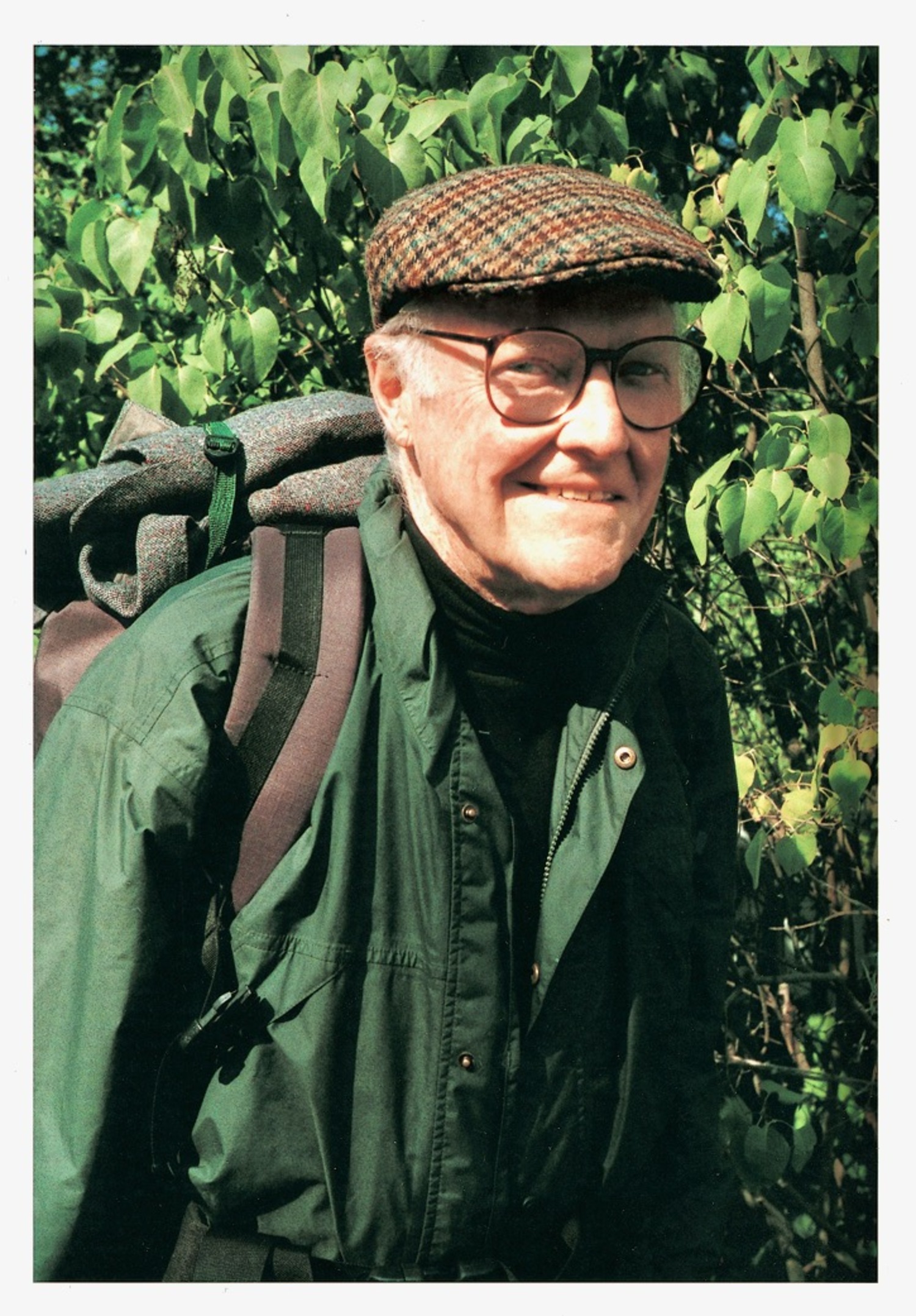
Robert Emmett Ginna Jr., writer, editor, and filmmaker, died at home in Sag Harbor on March 3. He was 99.
A quarter-century earlier, in his 74th year, he strapped on a 38-pound rucksack and set off to walk the length of Ireland. The journey became a book, “The Irish Way: A Walk Through Ireland’s Past and Present.” Illustrated with his own sketches, the work was just one chapter in a lifetime of adventuring in words and images, in a career that hopscotched between art museums, magazine and book publishing, television and film, and university teaching.
It was magazines, indirectly, that brought Ginna to Sag Harbor. He joined Life magazine in 1950. There, he fell in love with Margaret Williams, who became part of the influx of Time Incorporated staffers buying homes in the village in the 1950s. Ginna pursued her for several years, and married her in 1958. They both loved Sag Harbor and moved there full-time after the birth of their second child. When he shifted careers to become a filmmaker, Ginna maintained an office for many years over Marty’s Barbershop on Main Street.
His close friend, the writer James Salter, devoted several pages of his memoir, “Burning the Days,” to his ups and downs with Ginna in the movie business. “As a producer,” he wrote, “Ginna may have had limitations. He was scrupulously honest.”
Born in 1925, Ginna was raised and schooled in Rochester, New York, and was admitted to Harvard, but left there to serve in the U.S. Navy Pacific fleet in World War II. After his naval service, he graduated from the University of Rochester in 1948. Hoping to pursue medical research, he began working in a Rochester laboratory, but while traveling in France, he had an “epiphany,” as he called it, gazing at the Rose Window in Chartres Cathedral: a sudden realization that he should make his life in the arts.
Ginna took a master’s degree in art history at Harvard, then served briefly as a museum curator. But following his bent for writing, he took a job at Life. Later, in the 1950s, he held editorial positions at Scientific American and the arts magazine Horizon. As a journalist, Robert Emmett Ginna’s byline appeared, between the 1940s and the 2010s, in a score of magazines and newspapers, ranging from Esquire and Entertainment Weekly to the New York Times and The American Scholar.
A love of Ireland, and of Irish culture, was a thread running through Ginna’s life.
He interviewed the Irish playwright Sean O’Casey for NBC television, which led Ginna into independent producing for TV and film. His first feature film, in 1964, was “Young Cassidy,” drawn from O’Casey’s autobiography. In a coup for a novice filmmaker, Ginna landed the legendary John Ford as director, though Ford was taken ill early in production and Jack Cardiff completed shooting.
Ginna’s other movies included the drama “Brotherly Love,” starring Peter O’Toole and Susannah York, and “Before Winter Comes,” starring David Niven, Anna Karina, and the Israeli actor Topol. Ginna also co-wrote, with his Sag Harbor friend John Sherry, the western “The Last Challenge.”
In 1973, Ginna returned to Time Inc. as a founding editor of People, where he assigned and edited profiles of such authors as Graham Greene and Vladimir Nabokov. But People rapidly moved away from such elevated fare, and dismayed by its increasing emphasis on what he viewed as celebrity fluff, Ginna moved into book publishing in 1975, as a senior editor of Little, Brown and Company. One of his first acquisitions there was “Coma,” a medical thriller by Dr. Robin Cook, which launched Cook’s career as a blockbuster novelist. (Ginna was proudest of the more literary books that made up more of his list, such as Robert Nye’s “Falstaff” and James Salter’s “Solo Faces.” It was he who persuaded Salter to transform an unproduced screenplay into the novel.)
Ginna became editor-in-chief of Little, Brown in 1977. Nonetheless, in 1980 he was enticed back to Time, Inc. for one more stint, as the company attempted to revive Life, where Ginna had made his start in the magazine’s golden age. The new monthly Life could not overcome the headwinds already buffeting print publications in the 1980s and soon ceased regular publication.
Ginna began teaching writing and film courses at Harvard University in 1987 and took quickly to the classroom — he taught there for several years. Invited to establish an academic press at New England College in Henniker, New Hampshire, he did so in 2006, while also teaching writing there. In the summer of 2009, he began teaching in the annual Writers Conference at what is now Stony Brook Southampton, then joined the faculty in of its MFA program in Creative Writing and Literature.
In 2016, at 90, Ginna retired from teaching, but continued to pursue both writing and filmmaking. At his death, he left an uncompleted memoir titled “Epiphanies.” He strove — unsuccessfully, but with energy and optimism befitting a much younger man — to develop a film based on his friend O’Casey’s classic play, “The Shadow of a Gunman,” working with director Terry George, another Sag Harborite.
Ginna was widowed in 2004; for several years until her death in 2020, his companion was the writer Gail Sheehy, who wrote of their romance in her memoir “Daring.”
Ginna was born in Brooklyn on December 3, 1925, to Robert Emmett Ginna, an electrical engineer and later chairman of the Rochester Gas & Electric company, and Margaret McCall, Irish Americans on both sides. His first marriage, to Patricia Ellis, ended in divorce.
He was predeceased by his wife, Margaret Williams Ginna. He is survived by two children, Peter St. John Ginna and Mary Frances Williams (Molly) Ginna; his sister, Margretta Michie; grandchildren Henry Hewitt Ginna and Katharine Williams Ginna; and his great-grandson Colin Robert Ginna.
A funeral service will be held at St. Andrew’s Church in Sag Harbor at 11 a.m. on March 17.